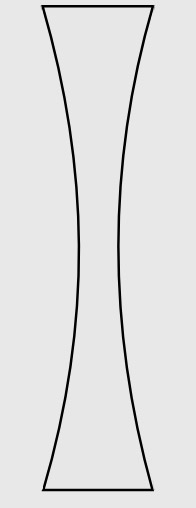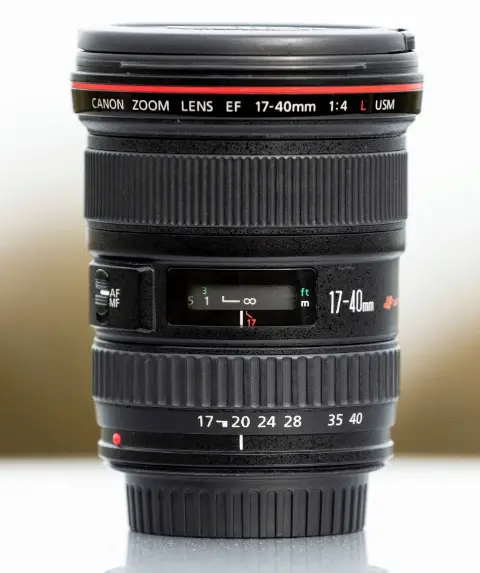The photographic lens is what creates the optical magic of bringing a subjects image to focus on to the image plane (that is the image sensor or the photographic film at the back of the camera). It refracts the lights rays, condenses them, and brings them to focus. The photographic lens is responsible for all the magic that happens inside a camera.

But did you know that the photographic lens is actually the total of several optical elements all working in tandem?
Both convex and concave lens elements are used in the manufacture of photographic lenses for various reasons including reduction of aberration as well as function of telephoto and zoom lenses. In its simplest form, a photographic lens would be made by a single convex lens.
One of the key components that make a photographic lens (the tube we are used to seeing) is the actual lens element, that refracts light and either converges or diverges it to form an image onto the image plane. Convex lenses converge while concave lenses diverge the light rays.
The Convex connection
There is one important connection between the human eye and the camera which is both use a convex lens to bring objects to focus. And that is the topic of our discussion today, whether the photographic lenses uses a convex lens or a concave lens.

Refraction of light
But before we dive right in we need to understand something and that is light rays don’t always travel in straight lines. They bend when they leave one medium like air and go into another like water or glass. This is known as the Refraction of light. This is the reason why photographic lenses in their simplest design have so many problems and they have to be corrected for those issues.
Types of lenses
Lenses can be divided into two broad groups – Convex and Concave lenses. They each have their properties. Both help in the functioning of the photographic lens.
Convex lenses
Convex lenses are widely used in prescription glasses as well as photographic lenses. Convex lenses tend to be thicker near the middle of the lens. This is the exact opposite of concave lenses.

Convex lenses tend to refract the light which passes through them and then converges at a point behind the lens, the whole reason why these lenses are the most sought after for manufacturing photographic lenses.
Another use of convex lenses is to manufacture prescription glasses to correct farsightedness. This is a problem where the subject can see objects that are close to them. The convex lens helps to form the image onto the retina of the eye.
Concave lenses
As you have just read in the previous definition, concave lenses are the exact opposite of convex lenses. They tend to be thicker towards the edges of the frame. The purpose of concave lenses is to refract the light outwards. This ensures that the lights rays ‘appear’ to merge at a point that is in front of the lens.

Concave lenses are also used for manufacturing prescription glasses. Because the image is projected to merge in front of the lens, they are used for lenses to correct nearsightedness. People with nearsightedness are unable to form the image onto the retina at the back of the eye. These lenses correct that problem.
Use in manufacturing photographic lenses
Both convex and concave lenses are used in manufacturing of photographic lenses. Let’s look at a few examples where they are used.
The simplest photographic lens
In the simplest form, a photographic lens would be made by a single convex lens. Light passing through that convex lens would get refracted.
With a convex lens, light passes through the lens and is slightly bent inwards. Due to this phenomenon, the image formed on the image plane is upside down. Remember, how we experimented with pinhole cameras in our school physics class? It is the same concept.
However, this simple experiment is rarely used in real-life situations because a single spherical convex lens is incapable of producing an image that is perfectly focused on the image plane.
Why?
Because light traveling from the edge of the lens converges at a different focal point compared to the light that is traveling from the center of the lens. Yes, this happens because of the curvature of the spherical convex lens and also sometimes depends on the quality of the lens which may have different refractive indices at different points.
What you get as a result is known as spherical aberration.
Anyways, this has to be corrected in photography otherwise the image will appear weird. And to correct this problem aspherical lens elements are used.
Telephoto lenses
Telephoto lenses are a classic example of how multiple convex and concave lenses are used to produce an optical lens. In telephoto lenses, a concave element is placed upfront. The job of this lens is to refract the light coming through the lens. This concave element is followed by a convex lens. The convex lens will turn the light rays parallel. In effect, the object is magnified.
Finally, there is yet another concave lens element at the back. This lens element condenses the light rays that were magnified by the first two lens elements. What you have in your hand is a simple telephoto lens.
The same principle is used in manufacturing telescopes. Originally, this simple design was used by Galileo to manufacture the Galilean telescope.
The above is an example of a fixed focal length telephoto lens. But if you add another set of convex and concave lenses along with a contraption that will allow the distance between the different pairs of concave and convex lenses to move back and forth within the barrel you will have in your hand a telephoto zoom lens.

Because the manufacturing process is more complicated telephoto zoom lenses cost so much more. Engineers not only have to keep an eye out for precise movement but also the optical quality.
On the other hand, prime telephoto lenses don’t have any moving mechanism inside them, so engineers can focus on only one aspect and that is optical sharpness. Therefore, prime lenses cost less than zoom lenses.
To correct chromatic aberrations
The use of convex and concave lenses is predominant in the correction of chromatic aberrations. But before we try and understand how chromatic aberrations are corrected let’s first get an idea of what these aberrations are.
Chromatic aberrations happen because of the inherent inability of glass elements to not be able to precisely pinpoint all the wavelengths of light onto the same focal point.
Light is composed of many different wavelengths (colors). When light passes through a glass element like a convex lens the glass is unable to make many different wavelengths of light converge at the same point. Meaning some wavelengths (colors) gets converged in front of the image plane while others converge behind the image plane.
For example, red light, which has a longer wavelength, converges at the back of the focal point. On the other hand, blue light, which has a shorter wavelength, converges at the front of the focal point.
The image plane here refers to the sensor or the photographic film on which the light is supposed to converge and form an image.
In the photographic world, this phenomenon is known by many names including color-shifting, and color bleeding, but primarily as chromatic aberrations.
To solve this problem convex and concave lens of different refractive indices are used. This cancels out the issue (the whole process is known as Aberration Correction) and all the light waves are converged on to the same image plane and on to the same point for a sharp image with no image bleeding.
Spherical aberrations
Just like to solve chromatic aberrations convex and concave lenses are joined together, to solve the problem of spherical aberrations, a combination of concave and convex lens are used. It seems that concave and convex lenses work together in a wide variety of situations in the construction of a photography lens.
Below is a good video on how lenses function:
Conclusion
Concave and convex lenses have different sets of properties. Yet they are both used in the manufacturing of photographic lenses. In some lenses, you have convex and concave elements paired together to correct different types of aberrations and for enabling a lens to zoom in on objects that are very far away.
Therefore it is difficult to pick any one kind of lens and be able to say with confidence that this is the only type that is used in the construction of photographic lenses. Both are important in the construction of photographic lenses and are frequently used as such.
To learn more about the various kinds of lenses there are and how to choose a camera lens for yourself read this detailed guide to choosing camera lenses.









1 comment